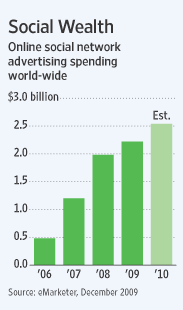
Richard Gibson of Dow Jones recently shared an article in the WSJ titled, Curves Loses Stamina Closes Fitness Clubs . The franchise system Curves International Inc., whose 30-minute workout for women once made it among the world's fastest-growing franchises, is running out of steam.
During the past 3 years Curves U.S. franchisees have been closing outlets at a rapid rate, shrinking the chain by a third: to 5,208 U.S. locations at the end of last year from 7,748 at the beginning of 2007, according to a recent franchise disclosure document the company filed with state regulators. More than 1,000 Curves vanished across the country in 2009, while just 35 new locations opened.
Franchisees and industry experts point to a failure to keep up with changing trends—including more flexible hours for busy working women—cheaper competition and the tough economy as major reasons for Curves' decline. It also reflects the oversaturation of small format facilities in the fitness industry in general and increasing pricing pressures.
Curves management thinks that much of the club closings were intended as part of a plan to "prune the system," according to Curves President Mike Raymond. Some owners had bought into Curves for the wrong reasons, he says, "they were motivated primarily as investors rather than owners."
Curves was one of the world's most popular franchised fitness centers as of the end of 2008, boasting nearly four million members world-wide, compared with 3.5 million for runner-up Gold's Gym International Inc., according to the International Health, Racquet and Sportsclub Association, an industry trade group. Figures for 2009 aren't yet available, the group says.
Financial statements filed by the closely held company show it to be profitable. For the year ended Dec. 31, Curves earned $16.4 million on revenue of $84.1 million, compared with earnings of $17.2 million on revenue of $128.7 million the prior year. The revenue falloff reflects lower franchising royalties and equipment sales. Franchisees pay the company 5% of their monthly gross plus another 3% for advertising.
The Curves formula is fairly simple: Each club features a circuit of strengthening and cardiovascular exercise equipment. Accompanied by upbeat music, members move from machine to machine, prompted by an audio tape. Monthly dues vary by market, but can range from about $29 to $49.
Some say the women-only concept helps combat the "intimidation factor" that may discourage trips to a local gym where one might encounter buffed bodies in Spandex—and men. Also, from the start Curves has encouraged women to operate the facilities, and the chain soon became a magnet for would-be female entrepreneurs.
The company's most recent disclosure document, dated March 25, says the total investment to open a Curves in the U.S. is between $31,825 and $39,100, excluding real-estate costs. But many Curves on the market are being sold for much less than that, brokers say.
Founded in 1992 by Gary Heavin, now its chief executive, Curves initially focused on small towns that couldn't support a full-sized gym. The business model allowed a franchisee to make a profit with as few as 100 members, Mr. Heavin once said. At its zenith Curves was opening one club every three hours.
But as Curves moved into urban markets some competitors exploited its vulnerabilities. Many Curves aren't open over the lunch hour, so working women began looking elsewhere for a quick workout. Soon round-the-clock rivals opened, such as Snap Fitness Inc. and Anytime Fitness, as did those with a larger array of workout equipment and exercise routines, including yoga and aerobic dance. Showers and dressing rooms were among their amenities, challenging Curves' bare-bones facility.
Curves franchisees say they began asking headquarters to modify its format so they could retain members, but were largely ignored—a contention the company denies. Mr. Raymond says Curves wants to be flexible and responsive to the needs of women, and that franchisees can seek permission to make adjustments in their offerings.
But Curves gained a reputation in the fitness industry for inflexibility.
Diana Tavary of Helena, Mont., says she walked away from her clubs after 10 years because the company's exercise format didn't keep up with the times. "They didn't allow you to offer anything different than just the" 30-minute circuit, she says.
"They're so constrained in their present model they don't appear to be open to enough feedback from their franchisees," says Tom Garmon, a broker with Fitness Industry Business Brokers, a Hattiesburg, Miss., firm that buys and sells health clubs, including Curves facilities.
Curves' Mr. Raymond says "the notion that we have not innovated is absurd." He points to a new generation of exercise equipment that gives immediate feedback and adjusts the intensity of a workout accordingly. As for extended hours, Mr. Raymond says the company has "safety issues" with the idea of keeping its clubs open around the clock.
The recession also has taken its toll on membership. Katherine Randall, who closed her lone Curves in Truckee, Calif., last month, says that when she bought the club in 2007 its membership was about 300; this year it was down to 70, which she says partly reflects a tough job market and other pressures on discretionary income.
Some franchisees think much of Curves' woes stem from marketing miscues. "There is also a perception that the Curves workout is a 'sissy workout,' which is a complete misunderstanding," says Jim Gasson, a multi-unit franchisee in northern Virginia.










